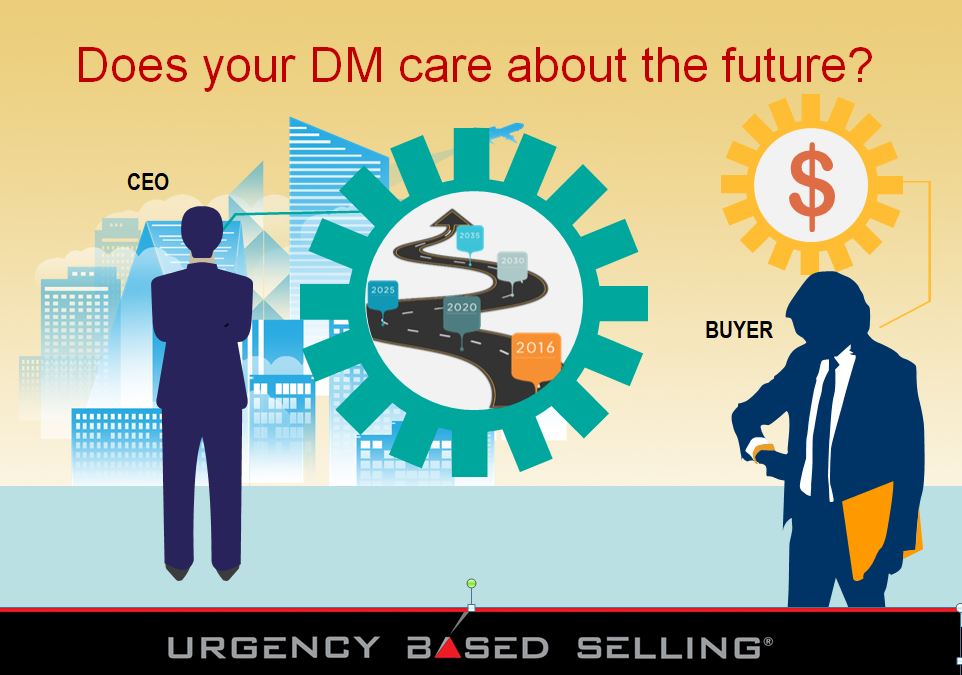Selling the future – talk to the right decision-maker!
August 25, 2017
The buyer says: “I’m good”, doesn’t want to even meet. You are frustrated, because your solution is ideal for the prospect’s long term flourishing, possibly even for survival. But the buyer isn’t even interested in what you have to say. Very likely he/she is buying the past, and you are selling a better future.
The buyer’s satisfaction with things as they are usually results from a short term orientation. This decision-maker (DM) projects the past and present into the future. When the business model is working, in a way it’s reasonable; why disrupt a system which is working?
The buyer may even be incented financially to take a short term outlook, compensated to buy what they are sourcing at a better price. Budgeting – as well as internal reporting and control systems – often reinforce the bias towards stasis, repeating the past.
Even when the business model isn’t working perfectly, the problem may not be perceived as “big enough” to warrant the disruption of change – a new method, a new vendor, etc. After all, the devil you know is better than the devil you don’t know.
This short term orientation can be inimical to an organization’s survival. The impact of changed technologies, tastes, competition is ubiquitous – we are immersed in change daily. Consider how communicating has changed in the last 30 years. Or the changed companies in the Dow Jones Industrial average. No one wants to become tomorrow’s buggy whip – obsolete. Yet so many companies are on the path to buggy whipdom.
Your selling problem may be: you’re talking to the wrong person. You need to be in conversation with someone who both cares and is empowered to think about the organization’s long term survival. This is usually the CEO/President or the owner.
Extraordinary, isn’t it. Most company team members are tasked with thinking about the present, repeating the current DNA; and this orientation may insure catastrophe.
How do you earn the right to talk with the CEO or owner? You need to bring credible information and even wisdom about the uncertain future. This allows you to help your prospect “talk to the future.”
First, you need to grab the CEO’s attention with a compelling message which addresses an urgent need – survival, improving decision-making, creating a defendable position, minimizing organizational risk, succession planning, smoother operations, improving company culture – these themes should talk to the CEO.
Once you have the CEO’s attention, here are some ways you can help CEO’s talk to the future:
- Case histories – where other customers are “ahead of the curve”, have implemented change, you can show its impact.
- Test Drive – related to case histories, allow the prospect to experience the value of change.
- Low cost tests – this is particularly important when your solution entails systemic change. Ideally, you can devise a limited test, to prove out your concept.
- Subject Matter Expert – develop the position as SME, by feeding your prospect a constant flow of new ideas – showing how the future will look.
- Help develop a company culture embracing change
- Show how to time pace change – make it happen faster. Offer to help facilitate the change you bring.
- Be part of an anti-fragile strategy – show how your solution makes the organization stronger in the face of external shocks – by both minimizing risk and introducing appropriate randomness
Recently, a seller reached out to the subject VP, requesting a meeting – simultaneously reaching out to the President. It wasn’t until the seller talked to the President and was referred to the VP, that the VP took a meeting.
Start at the top – talk to someone who cares about the future.